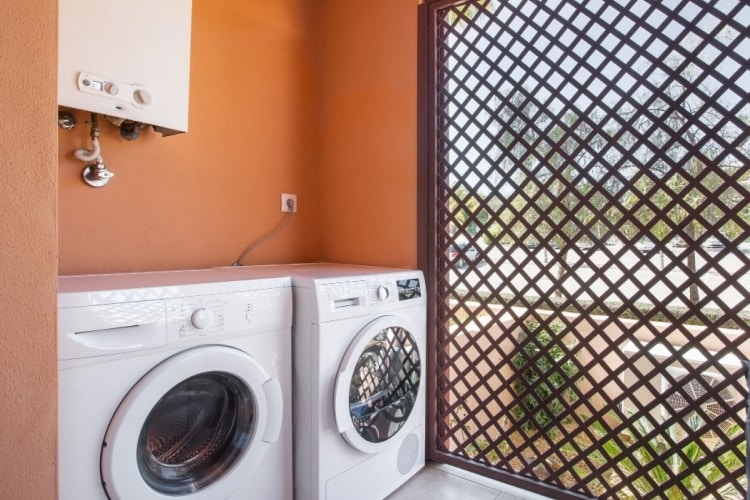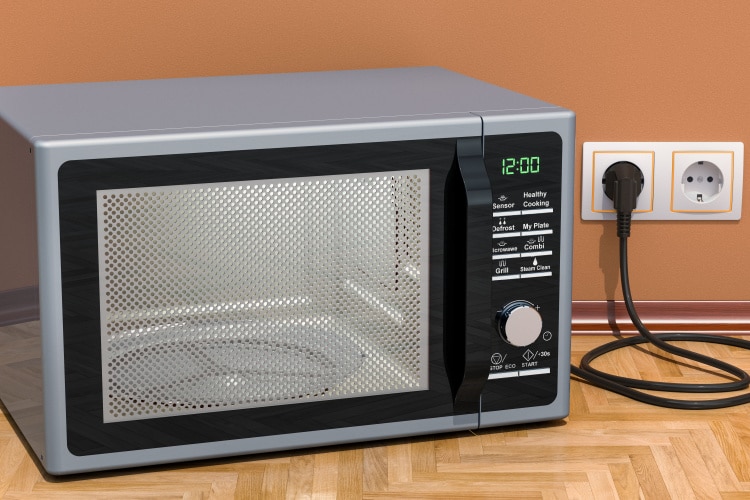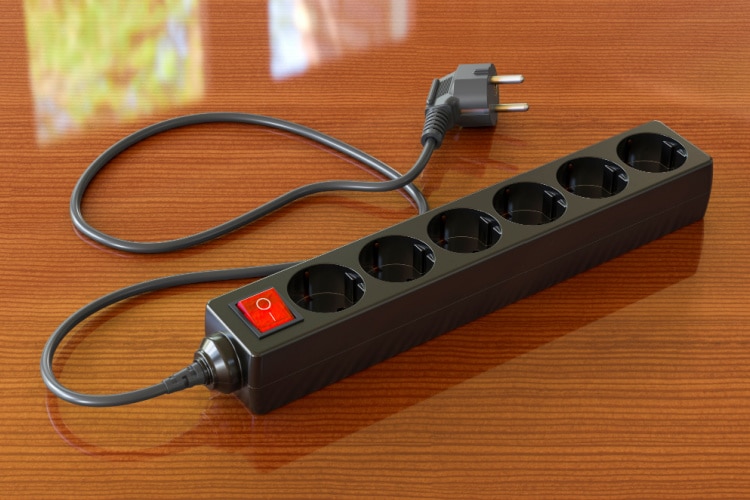A surge protector is a common sight in houses with a lot of electronics, though it shouldn’t be used on all gadgets and appliances. For example, some appliances with a high energy consumption rate could overload the surge protector, resulting in electrical damage.

One such appliance is the dryer. In fact, surge safety measures are already incorporated into washers and dryers in case of voltage spikes! Therefore, if you’ve considered using a surge protector for your dryer — don’t. Let’s learn why.
Should You Use a Surge Protector for Dryers?
There’s no need to use a surge protector with a dryer. Dryers have built-in electro-mechanical timers that protect the appliance against power spikes and surges. What’s more, a dryer uses more electricity than a surge protector is made to handle, so it’s always safer to connect it straight to a wall outlet.
According to the National Electrical Code, any device consuming 1,000 watts or more should have a designated outlet and circuit . The power range of dryers is between 1,800 and 5,000 watts, so a dedicated outlet is a must.
If you don’t, this powerful device will overload and overheat the surge protector as well as the power outlet, increasing the danger of fire on both sides of the connection. Plugging high-consumption devices to surge protectors is one of the most common causes of house fires!
This is important to keep in mind, especially when you consider that most people buy surge protectors of low quality, incapable of supporting multiple small gadgets, much less a dryer consuming up to 5000 watts of energy!
Why High-Wattage Appliances Need Dedicated Circuits?

Dedicated circuits protect against electric overloads.
An electric overload occurs when an appliance draws more power than the outlet, surge protector, or power strip supports. In the worst-case scenario, the electrical overload will overheat the wires, trip circuit breakers, and start an electrical fire.
While it’s perfectly safe to plug in low-wattage devices in a surge protector, such as laptops, printers, gaming systems, TVs, modems, and lamps, it’s dangerous to plug in high-wattage devices stacked with heavy machinery (e.g., dryers) and heating elements (e.g., microwaves). These appliances draw a lot of electricity, so to prevent an electric overload, a dedicated outlet is the way to go.
Appliances That Need a Dedicated Circuit
If an electrical gadget needs a designated circuit, there will be a note on the device itself or in the user manual. According to the National Electrical Code, you must connect the following items to a single outlet and circuit:
- Refrigerator
- Freezer
- Air conditioner
- Space heater
- Microwave
- Water heater
- Oven/stove
- Washing machine
- Dishwasher
- Garbage disposal
- Furnace
Appliances That Don’t Need a Dedicated Circuit
Many household appliances don’t need dedicated circuits because they only draw a low amount of electricity. Examples of low-consumption devices include:
- Blender
- Box fans
- Toaster
- Coffee maker
- Table lamp
- Charger
- Digital clock
- Laptop, tablet & smartphone
- Router
- Printer
- Copier
- Gaming console
- PCs
- TVs
It’s perfectly acceptable for the devices mentioned above not to have a designated outlet because they don’t feature potent motors needing too much electricity. However, not having a designated outlet doesn’t mean you can use them simultaneously with a surge protector. Each surge protector has limitations, which we’ll discuss in the next section.
The Appropriate Use of a Surge Protector

Surge protectors are a practical workaround for a shortage of electrical outlets. However, many use that additional outlet area for powering up more devices than a surge protector and an outlet are able to handle — and this is strictly prohibited.
For example, a laptop, table lamp, modem, and PC are unlikely to use more power than your surge protector can supply. However, if you connect a coffee maker, toaster, box fan, and blender and power them at the same time, you will unquestionably overload the connection and overheat the outlet.
If you are running out of receptacle space, you can plug two surge protectors into one outlet. However, the rule is the same: never plug high-wattage appliances and keep the number of plugged-in devices to a minimum.
You should also avoid using the daisy chain strategy. To put it another way, never plug a surge protector into another surge protector because you run the risk of electrical overload, long-term device harm, and possibly a fire hazard.
Lastly, refrain from buying an untested surge protector and opt for one approved by OSHA’s Nationally Recognized Testing Center.
Opt for a Whole-House Surge Protector
Do you want to protect your high-wattage appliances from a power surge, but a plug-in surge protector can’t withstand such enormous wattage? There’s only one solution: installing a whole house surge protector.
As the name suggests, a whole-house surge protector is mounted on your primary circuit panel, protecting both low- and high-wattage appliances. Once it senses a voltage abnormality, anything from a lightning strike to a slight twitch of excess electricity, the surge protector activates and diverts the extra voltage into the ground.
So, is a whole-house surge protector worth it? Absolutely. Although it will cost you more initially, you’ll pay more if a power surge damages your refrigerator or any other pricey appliance!
Conclusion
So, to sum up, your household dryer doesn’t need a surge protector.
First, the appliance is protected against power surges by an integrated electro-mechanical timer. Second, the dryer’s high wattage will likely cause a significant electrical overload and a potential fire hazard.
Surge protectors are primarily for our homes’ low-wattage electrical gadgets, such as TVs, computers, smartphones, laptops, tablets, and other electronic devices. A surge protector can also be helpful for small kitchen appliances like coffee makers, toasters, and blenders. However, you must be careful not to overload the device by restricting the number of powered gadgets!
Suppose you want to protect your high-wattage appliances, such as the fridge, air conditioner, freezer, and oven, from a power surge. We’ve learned that dryers have built-in protection, but installing a whole-house surge protector is the best option for those appliances that don’t.